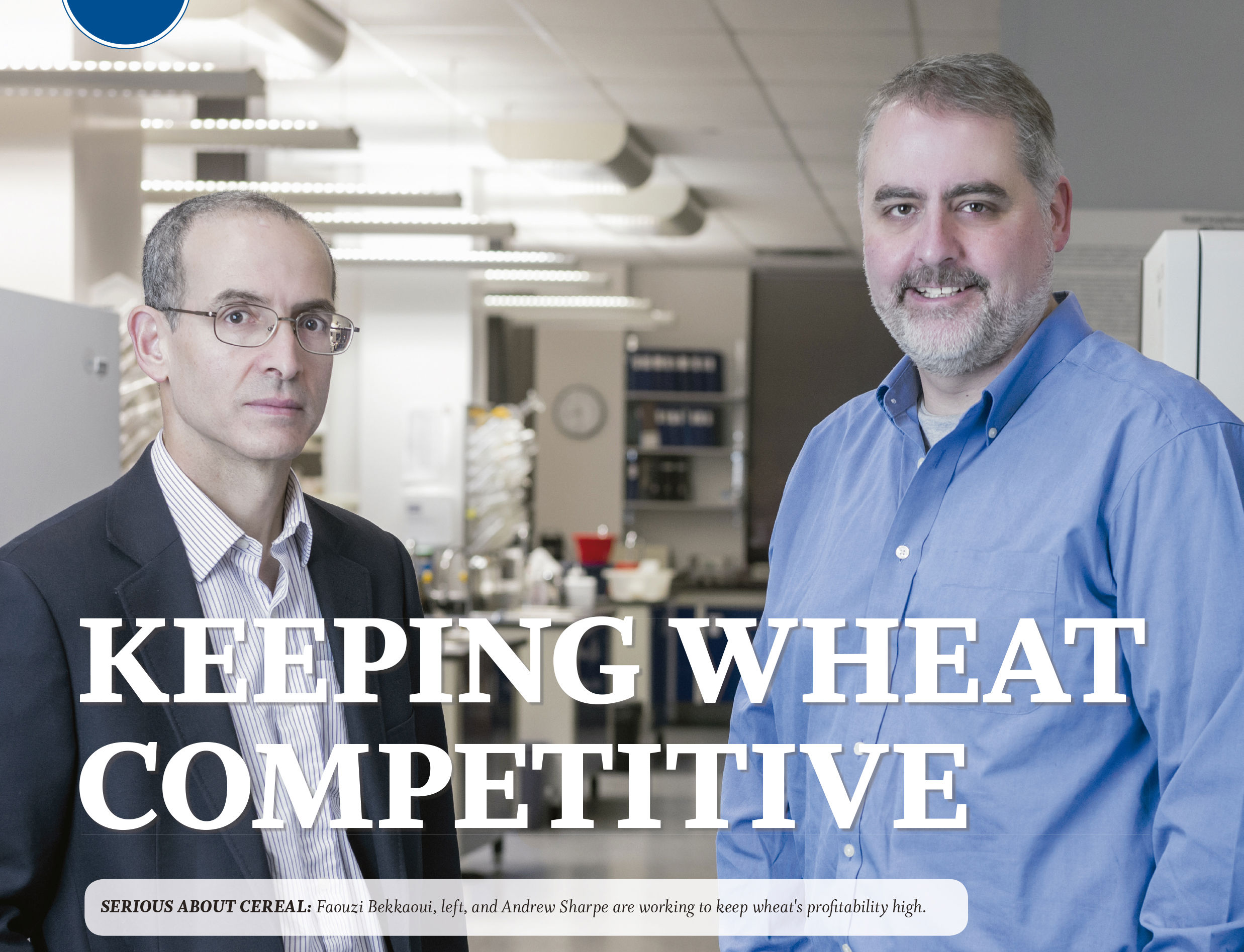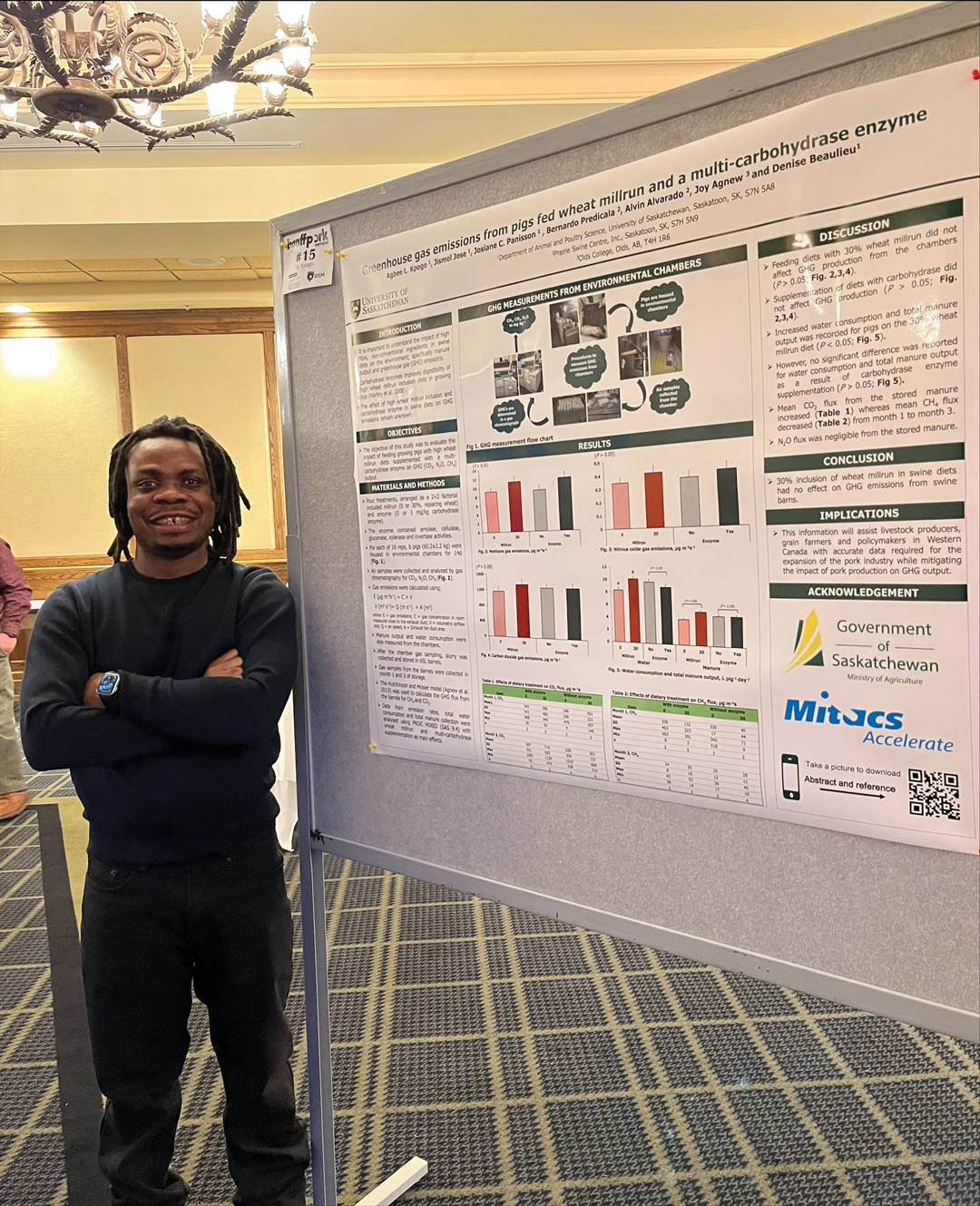Keeping Wheat Competitive
by TAMARA LEIGH
Wheat is Canada’S major commodity crop, and one of the most popular food crops in the world—yet for the last 20 years, research has lagged and production has decreased. A new research alliance is bringing together some of the superpowers in Canadian genetic research and cereal development to fill the gap and ensure future competitiveness of Canadian wheat farmers.
The Canadian Wheat Alliance (CWA) is an 11-year commitment between Agriculture and Agri-Food Canada (AAFC), the University of Saskatchewan, the Province of Saskatchewan and the National Research Council Canada (NRC) to work together to develop new and improved varieties of wheat that are resistant to disease; have increased tolerance to drought, heat and cold stresses; require less nitrogen fertilizer; and produce increased yields.
“By 2050 we will need a 60 per cent increase in food production. At the same time, we are facing challenges from climate change, limits to expanding growing areas, and the availability of water,” said Faouzi Bekkaoui, executive director of the Wheat Improvement Flagship Program. “We believe that working together as a partnership and alliance will maximize our chances of succeeding and
fulfilling the demand for the increase in wheat globally.”
The CWA will invest approximately $97 million over the first five years of the initiative, with a goal of increasing the value of wheat at the Canadian farmgate by $4.5 billion by 2031.
“Agriculture and Agri-Food Canada and the University of Saskatchewan have been breeding wheat for a long time. On the Prairies, 86 per cent of the acreage planted comes from varieties developed by these programs,” said Bekkaoui. “The NRC brings expertise in genomics and biotech to assist with information and tools to help breeders accelerate their programs and understand complex traits.”
Research will focus on six projects to improve the yield of Canadian wheat varieties:
• Genomics-Assisted Breeding (GAB) will build genomic resources to speed up gene discovery and the ability to identify and develop new traits.
• Wheat Improvement through Cell Technologies (WICT) will improve efficiencies in double haploid systems, reducing variety development times by two to four years.
• Enhanced Fusarium and Rust Tolerance (EFRT) will work to reduce producer losses due to disease by identifying disease-resistant genes and breeding new wheat varieties with more durable fusarium and rust tolerance.
• Improving Wheat Productivity Under Conditions of Abiotic Stress (Abiotic stress project) will seek to improve the drought, heat and cold tolerance of wheat varieties.
• Targeting developmental pathways to improve performance and yield in wheat looks at plant development and crop performance to better understand seed development from early stages to maturity to increase plant yield and seed production.
• Beneficial Biotic Interactions (BBI) looks at the interaction of micro-organisms in the soil as a way to enhance nutrient-use efficiency and plant health, and to reduce the need for nitrogen fertilizers.
The CWA marks a shift in focus for researchers at the NRC, moving from work on other crops, like canola, to wheat.
“By 2050 we will need a 60 per cent increase in food production. At the same time, we are facing challenges from climate change, limits to expanding growing areas, and the availability of water.”– Faouzi Bekkaoui
Andrew Sharpe is a research officer at the NRC and leads the group working on genomics-assisted breeding. He said that one of the challenges in wheat research in the past has been the size of the genome—it is five times the size of the human genome, and includes a lot of repetitive genetic information.
“Over the last few years, we have seen the DNA sequencing technology move forward in quantum leaps in terms of how much data you can manage,” said Sharpe. “Technology has transformed things. It has enabled projects to move from pipe dreams to reality.”
The CWA’s genome-assisted breeding project is working with Genome Canada and international networks to map the wheat genome and build a resource of genetic information that plant breeders and other researchers can use.
“We can take those bits of useful information where we have a particular genetic variance in the DNA sequence and turn it into a marker that you can detect in a fairly routine fashion,” Sharpe explained. “The marker provides a beacon that is specific to a particular variation in a specific cultivar, and the breeders can use that marker to speed up the breeding process instead of having to grow the plants to full maturity to assess the trait.”
For AAFC Plant Breeder Ron DePauw, the resources that will become available to him through the CWA will significantly improve the efficiency of his work.
“The NRC has a lot of capability in basic upstream science, and this new knowledge and technology will ultimately result in better varieties for producers,” said DePauw. “As we increase our understanding and develop genetic tools or markers that are linked to the genes that control those traits, we can select them more effectively and accelerate our pace as we go forward.”
Acceleration, in this case, means that the work being done in Sharpe’s lab today may not yield results in the field until after 2020. Even with the advances in gene identification and propagation, it takes DePauw eight to 10 years to develop and register a new cultivar.
The long-term focus and commitment to collaboration provided by the CWA partners is a unique model in Canadian grains research today.
“We believe that going to this alliance will minimize duplication and provide complementarity in research,” said bekkaoui, who is working to recruit partners from private industry to join the cwa. “sometimes the funding resource is short and there’s no strategy, but we want to have a long-term plan with real impact on the future profitability of the sector.”







Comments